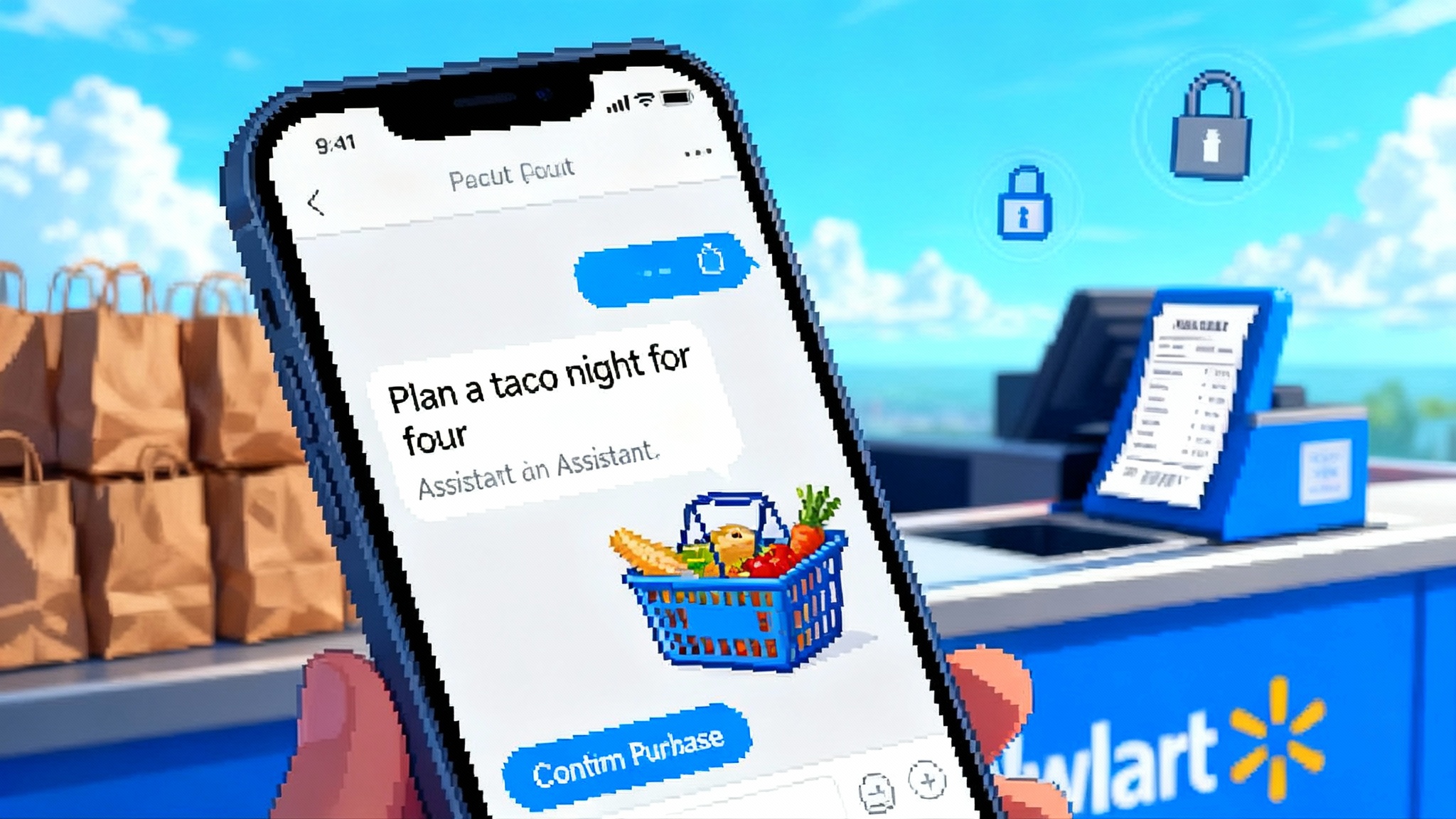AgentKit turns AI agents into governed, shippable products
OpenAI’s AgentKit unifies a visual builder, agent evals, and a connector registry so teams move from brittle demos to governed production workflows. Learn what changed, why it matters, and how to ship in 90 days.

The toolkit moment for AI agents
On October 6, 2025, OpenAI introduced AgentKit, a set of production tools that aims to make agents as straightforward to ship as a modern web app. The launch bundles a visual Agent Builder, a Connector Registry, new Evals for Agents capabilities, and an embeddable UI kit called ChatKit. Taken together, these pieces turn one-off demos into a repeatable engineering practice. For a deeper feature summary, see OpenAI’s official writeup in OpenAI's Introducing AgentKit overview.
AgentKit matters because it reframes what an agent is inside a company. Until now, agents often lived as experimental scripts in notebooks, brittle glue that broke when a prompt changed, or lab demos that were impossible to govern. AgentKit treats the agent as a product. It gives teams versioning, testing, connectors, and a consistent way to embed and measure behavior. We have seen similar moments before, when front end frameworks made web apps repeatable and when continuous integration made releases reliable. This is that moment for agents.
From brittle prototypes to governed workflows
Early agents were home-built gadgets. Clever, sometimes powerful, and always fragile. A single mis-typed field could knock them offline. Production teams need three things those gadgets lacked: a canvas to design and version workflows, a way to evaluate behavior at each step, and a central place to connect tools and data with guardrails. AgentKit offers all three.
- Agent Builder provides a visual canvas for multi step logic. You assemble prompts, tools, and handoffs like components, then run preview traces and pin versions. Legal, security, and product can evaluate a concrete graph instead of a block of prompts.
- Evals for Agents turns benchmarking into a first class workflow. Datasets, trace grading, and automated prompt optimization help teams measure the right things and improve them. You can evaluate the entire chain or a single step, then promote a variant when it clears the bar.
- The Connector Registry centralizes access to internal systems and third party services. Instead of every team rolling bespoke connectors, admins approve and monitor integrations once, then reuse them across agents. The registry includes prebuilt integrations, support for third party servers through the Model Context Protocol, and enterprise controls.
- ChatKit closes the loop. It is an embeddable chat and agent interface that handles streaming, threads, and in chat interactions, so product teams do not spend weeks rebuilding the same scaffolding.
If you are investing at the infrastructure edge, it pairs well with runtime work at the perimeter, such as Cloudflare’s Agents SDK at the edge. The pattern is consistent: standardize the scaffolding, then focus on differentiated behavior.
The effect is practical. With a single platform, teams can move from a whiteboard to a secure, observable agent the same way they move from a prototype to a production microservice. The difference is not only speed, it is accountability. When an agent breaks, you can trace why. When behavior improves, you can prove it.
What is new under the hood
Two capabilities anchor the shift to production: stepwise evaluation and governed connectivity.
Evals that reflect how agents actually work
Classical benchmarks score a single model output. Agents are different. They call tools, write intermediate notes, and branch. Evals for Agents adds three practical pieces:
- Datasets designed for agents. Teams seed realistic tasks, add human annotations over time, and keep results comparable as prompts or tools change.
- Trace grading. Instead of grading only the final answer, you grade the chain. That exposes where an agent misread a field, failed a tool call, or took the wrong branch.
- Automated prompt optimization. Structured graders suggest edits you can accept, test, and version. The result is a controlled loop rather than prompt roulette.
There is also support to evaluate third party models in the same pipeline. That matters for companies that run a mix of providers. A unified eval harness makes vendor comparisons less anecdotal and more empirical.
A registry for connectors and control
Most failures in production are not model failures, they are integration failures. The Connector Registry begins to standardize how agents plug into company systems. Admins approve connectors once, set scopes, and monitor use through a central console. Developers call those connectors from Agent Builder without reinventing authentication, secrets handling, and policy checks.
Model Context Protocol support is a quiet catalyst. MCP treats tools and data sources as networked services that any compliant agent can call. As more teams register MCP servers for internal tools, the agent portfolio starts to look like a service mesh rather than a tangle of scripts. That makes governance real. You can audit calls, rotate credentials, and swap providers without breaking every workflow.
ChatKit and the last mile
Embedding an agent in a product is deceptively hard. You need streaming responses, stateful threads, and interaction patterns that feel native. ChatKit offers those pieces so that teams can drop a working agent into a product with a few lines of code and style it to match brand guidelines. Less bespoke front end work means faster iteration and fewer regressions when the backend evolves.
Reinforcement fine tuning for agents that learn the job
OpenAI also highlighted reinforcement fine tuning options that target agent behavior. The goal is not raw benchmark scores, it is better tool use and policy adherence. Features like custom tool call optimization and custom graders let teams push an agent toward long horizon tasks where one early mistake can cascade later. That is the gap between an agent that answers a question and an agent that completes a process. For teams that sit close to operations, this dovetails with the shift described in PagerDuty’s AI agents for ops.
What this means for MCP driven integrations and incumbents
The integration layer is where the competitive map shifts next. Four implications stand out:
-
Connectors become a shared asset. With a registry and MCP support, a connector built once can serve many agents across products. That reduces the advantage of glue platforms that won on breadth of integrations alone. It also rewards vendors who publish robust MCP servers with clear scopes and logs.
-
Zapier moves up the stack. Zapier earned its place by normalizing thousands of integrations and giving automation to non developers. In an AgentKit world, the value shifts to agent aware workflows, error handling, and human in the loop checkpoints. Expect Zapier to emphasize policy controls, approval flows, and analytics for agent actions rather than only triggers and zaps. The sweet spot becomes orchestration between autonomous steps and human reviews.
-
Amazon Bedrock leans into models and compliance. Bedrock already offers a menu of models with enterprise guardrails. If AgentKit becomes the default composition layer for many teams, Bedrock’s counter is to compete on model diversity, data locality, and compliance footprints. Think private networking, regional isolation, and transparent billing views that agents can use to optimize cost. Cross platform evals in AgentKit will make these tradeoffs more visible inside procurement.
-
GitHub focuses on developer experience and provenance. GitHub Copilot sits closest to daily developer workflows. As agents move from code suggestions to automated changes and pull requests, provenance and policy checks become the front line. Expect GitHub to emphasize signed changes by agents, granular repository scopes, and seamless reviews that blend human and agent commits. If AgentKit handles the runtime, GitHub can own the collaboration layer where agents and developers co author changes.
The through line is simple. MCP and registries make connectors a utility. Differentiation shifts to governance, analytics, and the invisible work that keeps agents safe and aligned with policy.
A 30 60 90 day playbook to capitalize now
You do not need a perfect plan. You need a bounded scope, a governance baseline, and a path to your first production agent. Here is a practical schedule.
Days 0 to 30: Prove one valuable workflow
- Pick two candidate use cases with measurable value, one external facing and one internal. Examples: customer support triage and sales research briefs. Rank by estimated weekly hours saved and risk level.
- Set non negotiables. Define what data the agent can see, what tools it can call, and where human approval is required. Write these as policy statements before you open the builder.
- Connect data through the Connector Registry. Start with read only scopes, then add write permissions for a single low risk endpoint once your evals are green.
- Build in Agent Builder with a thin vertical slice. One prompt, two tools, one handoff. Add error handling for the two most likely failure modes, such as timeouts and null responses.
- Create a seed eval dataset. Ten to twenty real tasks that reflect the edge cases you expect. Grade both the final outcome and the trace. Tag failures with a short taxonomy, for example ToolError, Hallucination, Policy.
- Embed a pilot interface with ChatKit for a closed group of users. Instrument usage, feedback, and time to completion. Make it clear when the agent is confident and when it needs help.
Decision gate at day 30: the agent must complete at least 60 percent of tasks without human help and must reduce time to completion by 30 percent in the pilot. If not, narrow scope and continue another two weeks. If yes, proceed.
Days 31 to 60: Industrialize the path
- Expand eval coverage. Grow your dataset to fifty tasks and add automated prompt optimization. Promote only versions that beat the last baseline by a pre agreed margin.
- Wire in approvals. Add human in the loop steps where policy demands it, such as sending messages to customers or writing to systems of record. Log every approval with reason codes.
- Harden connectors. Move secrets to your standard vault, set rotation schedules, and enable monitoring on high value actions. Add alerts for unusual patterns like bursty calls or long chains of retries.
- Introduce budget and latency controls. Set ceilings on token usage per task and per user. Add simple backpressure when queues grow. Make these limits visible to your product team.
- Start reinforcement fine tuning if your use case benefits from long horizon reasoning. Pick one behavior to optimize, such as choosing the right tool under ambiguity. Use custom graders that reflect business outcomes rather than generic scores.
- Prepare the path to production. Define service level objectives for success rate, accuracy by benchmark, and median latency. Agree on on call and rollback procedures just as you would for any microservice.
Decision gate at day 60: the agent must meet your service level objectives in staging for two weeks, with zero high severity policy violations and no unexplained failures in trace grading. If green, move to a controlled production rollout.
Days 61 to 90: Ship, measure, and scale safely
- Roll out to a larger user group with clear guardrails. Start with a percentage based rollout and limit high risk actions by role. Keep a clear escape hatch, such as feature flags and fast deactivation.
- Instrument business metrics. Track hours saved, tickets resolved end to end, or leads qualified. Tie those to cost per task, including model usage and engineering time.
- Add red team tests. Run quarterly adversarial evals that simulate jailbreaks, prompt injection, and data exfiltration attempts. Use the results to tune guardrails and scopes.
- Document quirks and affordances. Agents are probabilistic. Write down known failure modes and teach users how to phrase tasks or when to escalate to a human. This is product work, not just engineering work.
- Create an agent review. Treat the agent as a living product with a backlog and an owner. Schedule monthly reviews that include legal, security, support, and product. Promote versions only after they pass the same criteria every time.
At day 90, you should have one agent in production that delivers measurable value and a repeatable process to build the next one. That is the compounding effect that turns a pilot into a platform.
How this changes day to day work
- For engineering: fewer bespoke glue scripts, more reusable components. The visual canvas aligns with code reviews, and the eval harness enables safe iteration.
- For security and compliance: clearer scopes and audit trails. The registry makes it possible to say yes more often because you can see and control usage.
- For product and operations: faster experiments and clearer outcomes. Embeddable UI and trace grading shorten the loop from idea to measured improvement.
If your data team is leaning into lakehouse centric workflows, the same production mindset shows up in Databricks and OpenAI Agent Bricks. The industry is converging on governed agents that plug into reliable data and policy layers.
What to watch next
Two milestones will shape adoption over the next few quarters. The first is the steady expansion of the Connector Registry in enterprise environments. When teams can wire agents into core systems with the same confidence they wire a new service, agents move from novelty to norm. The second is the evolution of the agent platform as a whole, described by OpenAI’s direction to build agents on one platform. As the platform matures, the winners will be the teams that can show measurable improvements, explainable behavior, and predictable costs.
Expect the next wave of competition to play out in governance and analytics rather than raw model capability. Companies will compare platforms on who can prove policy compliance, who can show measurable improvements over time, and who can reduce total cost per successful task. Those are the levers budget owners understand.
The bottom line
AgentKit marks a practical turning point. It aligns the incentives of the teams who build agents with the teams who must govern them. By packaging a visual builder, evaluation, connectors, and an embeddable interface, it gives companies a way to turn narrow demos into dependable workflows. The result is not a promise that agents will do everything. It is a path to build agents that do a few things very well, with proof. If you start now with a disciplined 30 60 90 plan, you can have one of those agents in production by the end of the quarter and a playbook for many more after that.








